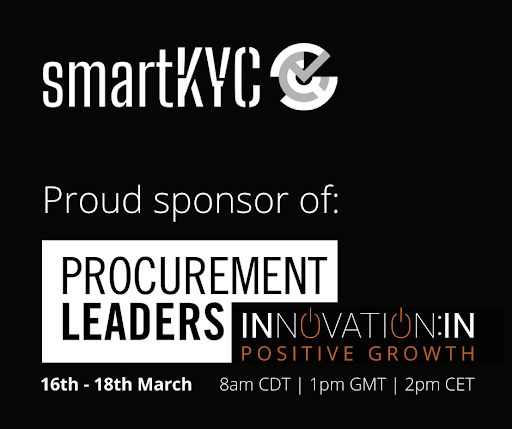AI and intelligence-led ESG risk monitoring
I spoke first at Innovation:In Positive Growth where the focus was on all things ESG. I was interviewed by Procurement Leaders’ Product Manager Steve Hall on the subject of AI and intelligence-led ESG risk monitoring. The main thrust of my talk was that technology now enables organisations to be risk vigilant, 24/7 – to identify and respond to emerging ESG issues in supply chains as they happen. Dealing with such issues quickly could be the difference between a risk mitigated effectively and a reputational crisis. In this interview, I reminded the audience that ESG tends to be more prevalent in emerging and frontier markets and that AI technology is now able to mine for risk intelligence in any foreign language source – deep web, mainstream media outlet or social media site – so wherever your supplier operates. A final observation was that while external ratings have obvious appeal in that they enumerate risk, they are snapshots in time and represent a tiny proportion of the corporate universe. Effective use of AI can help plug those gaps. You can watch this session on demand.
The arrival of Know Your Investment (KYI)
Some of these themes are echoed in this article I was asked to write for WealthBriefing on the arrival of Know Your Investment (KYI). This is again on the requirement for ESG risk intelligence but seen from the perspective of banks and asset managers. While the nature of their respective relationships may differ, corporates and financial institutions share a common desire to ensure those relationships are ESG-compliant for the duration of the relationship, not just the point at which it begins.
Risk and the value of OSINT
The second event with Procurement Leaders, Innovation:In Resilient Supplier Networks, was based around “knowing your suppliers, building trust and having visibility… when building new approaches to mitigate disruption”. I was joined on a panel by Nolan Smith (Division Vice President, Global Supply Management Business Operations at Corning Incorporated) and Markus Mirgeler (Head of Global Procurement Services at Clariant International). This panel discussion gave me the opportunity to comment on some areas of risk I have significant experience in. I say “some” because procurement and supply chain leaders have the unenviable tasks of trying to manage a myriad of externalities – financial health of suppliers, violent and political risk, reputational risk by association (principally ESG), financial crime, logistical disruption, weather, physical and cybercrime… and now one can of course add pandemic.
In this session, I focused on the first four of the above and the overarching message was that risk signals are emitted all the time if only one could a) frame them as set of indicators and b) have the means to watch them. I was delighted to cite specific examples of political and violent risk indicators we used to forecast risk at a previous business (Exclusive Analysis), now the country risk arm of IHS Markit. Exclusive Analysis pioneered the commercial use of an indicator-led methodology to forecast risk and I am proud to apply some of those rigorous principles to what we do at smartKYC, albeit for a different use case.
OSINT (open source intelligence) is not a new concept, but my personal view is that it has been undervalued in comparison to HUMINT (human intelligence = a human source network). I think that is because a) it is less exciting (phrases like “according to a source familiar with the matter” are arguably more seductive than “I found this in a local blog”) and b) because the technology to mine for OSINT has always been quite crude. That has all changed with AI. For example, at smartKYC we can generate, at speed and scale, precise and credible facts from disparate web and news material in non-Latin scripts (e.g. Russian, Arabic, Chinese, Hindi, Thai) in addition to all Indo-European languages. This enables procurement and supply chain professionals to confidently watch for emerging risks within their supply chains. The net effect of this is that in areas like ESG, they can respond in a timely and appropriate fashion to events rather than have those events spiral out of control.
Thanks to our friends at Procurement Leaders for hosting this stimulating series and inviting smartKYC to be part of it.

